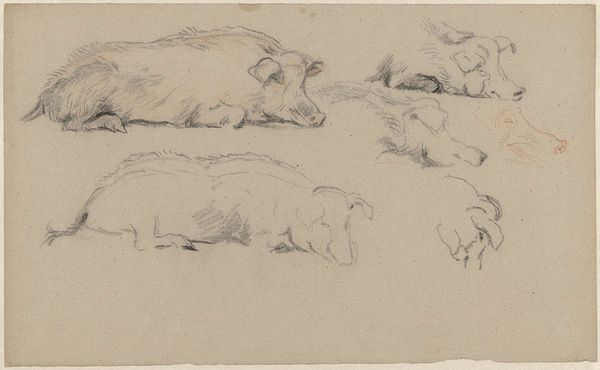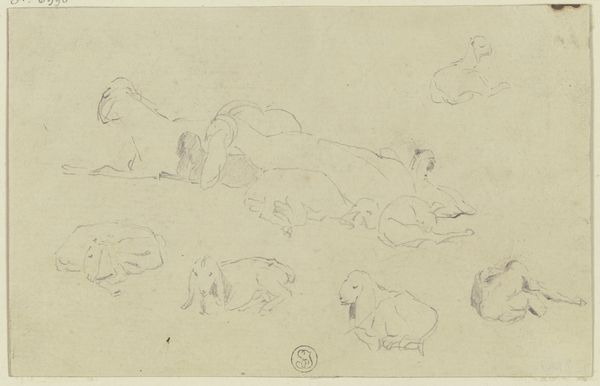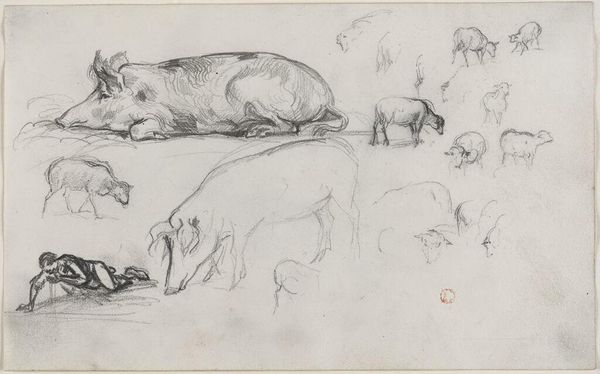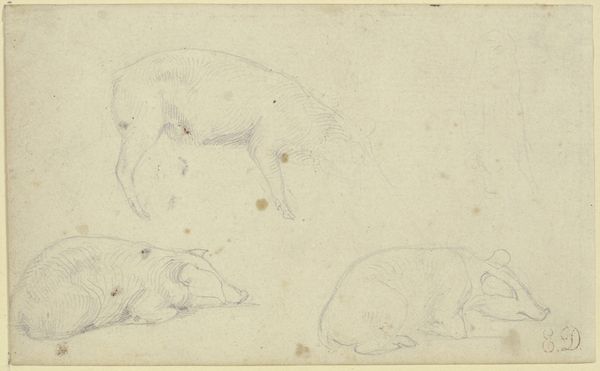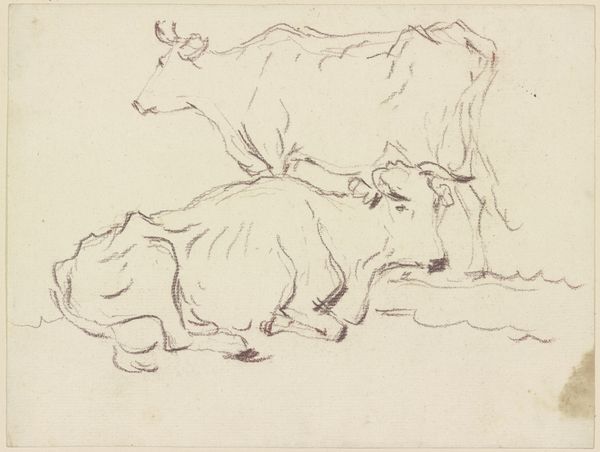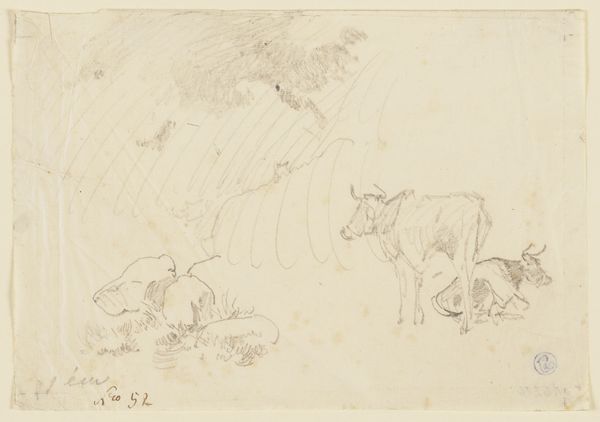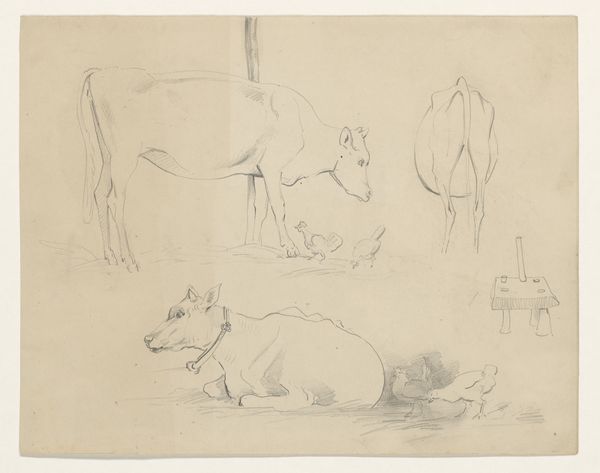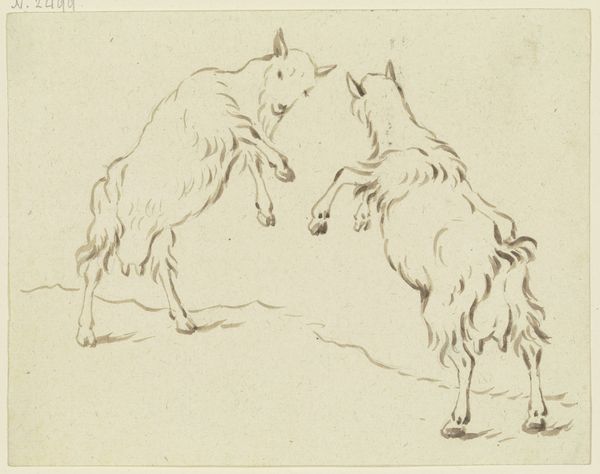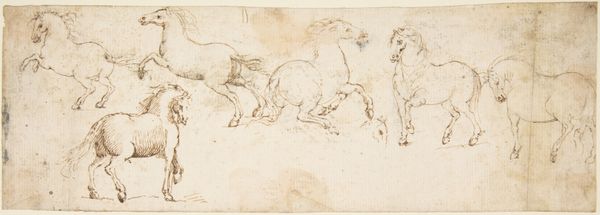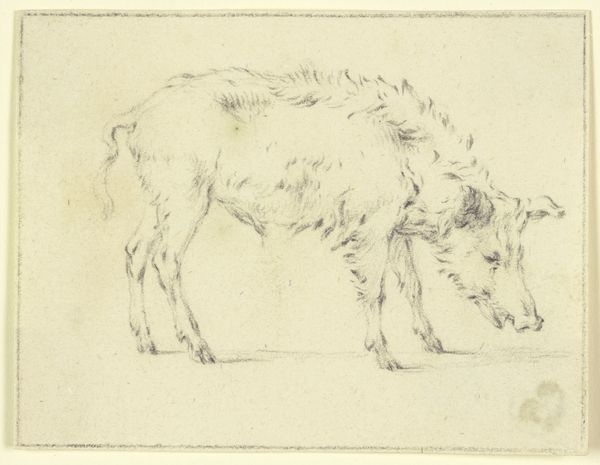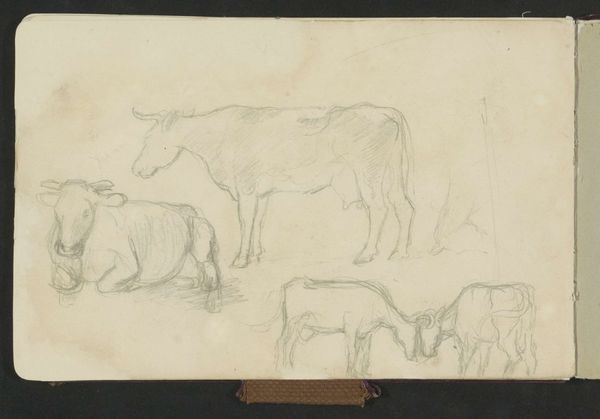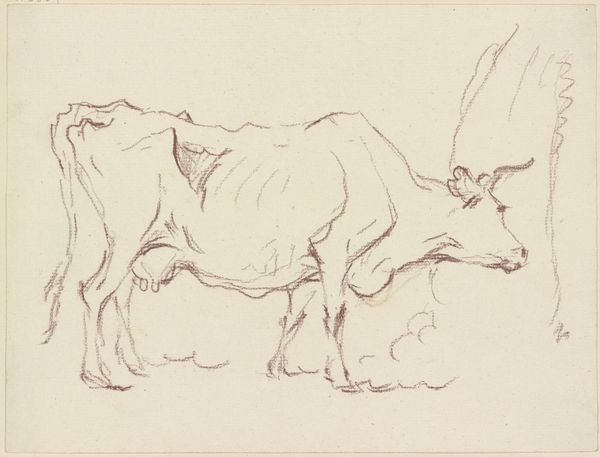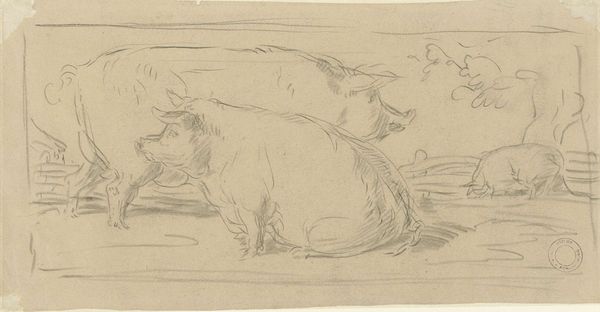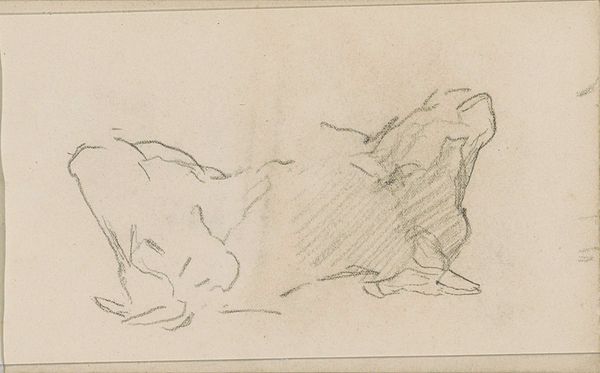
Twee studies van een liggend varken en twee staande varkens 1782 - 1837
0:00
0:00
drawing, paper, pencil
#
drawing
#
animal
#
pencil sketch
#
landscape
#
figuration
#
paper
#
pencil
#
realism
Dimensions: height 109 mm, width 219 mm
Copyright: Rijks Museum: Open Domain
Editor: Here we have "Twee studies van een liggend varken en twee staande varkens" or "Two studies of a lying pig and two standing pigs," created by Pieter Bartholomeusz. Barbiers sometime between 1782 and 1837. It's a pencil drawing on paper. It's interesting how casually these animals are rendered; they look like studies for something else. What do you see in this piece? Curator: For me, it's less about the *what* and more about the *how* and *why* of this work. Consider the material reality of 18th and 19th-century Holland. Pigs weren't quaint farm animals; they were livestock, central to the economic lives of many. This drawing, seemingly simple, highlights the means of survival and wealth creation. How do the rapid lines speak to the work involved in animal husbandry? Editor: I hadn’t considered that at all. So you’re suggesting the drawing itself, the marks made with the pencil, echoes the labor connected to the animal? Curator: Exactly. Pencil, paper, the artist’s time - all resources. He is depicting the subject. These materials have to be extracted from somewhere; it could reference labour connected with it. Think of the butcher’s work or how it impacts social classes. What statement about art's function might the artist be trying to make by documenting something so deeply tied to labor? Editor: So it moves away from some idyllic landscape and presents…daily life. The business of it. Curator: Precisely! We consider art in this era; think about social hierarchy and wealth accumulation. Art might reflect it rather than the actual conditions, or the work, of such accumulation. These pigs were essentially commodities. So, what do you make of the contrast between this utilitarian existence and its representation through drawing, a craft often associated with ‘high’ art? Editor: It challenges the definition of ‘high art’ and its place by focusing on working animals central to wealth. Thank you, this has widened my perspective so much! Curator: My pleasure! It is also fascinating how artmaking reflects materials that make this possible and their place in the society it depicts.
Comments
No comments
Be the first to comment and join the conversation on the ultimate creative platform.
